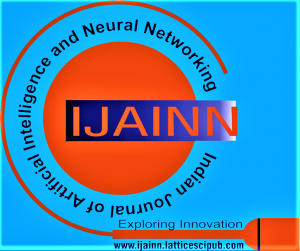![]()
Deep Learning-Based Time Series Analysis for Environment Changes
Ajay Anand1, Shashi Bhushan2, Sudhaker Upadhyay3
1Ajay Anand, Department of Mathematics and Computer Science University of Magadh, Bodh Gaya (Bihar), India.
2Dr. Shashi Bhushan, Assistant Professor, Amity Institute of Information Technology, Patna (Bihar), India.
3Dr. Sudhaker Upadhyay, Assistant Professor and Head, Department of Physics, K.L.S. College, Nawada (Bihar), India.
Manuscript received on 05 October 2024 | Revised Manuscript received on 10 October 2024 | Manuscript Accepted on 15 October 2024 | Manuscript published on 30 October 2024 | PP: 10-18 | Volume-4 Issue-6, October 2024 | Retrieval Number: 100.1/ijainn.B39041212222 | DOI: 10.54105/ijainn.B3904.04061024
Open Access | Editorial and Publishing Policies | Cite | Zenodo | OJS | Indexing and Abstracting
© The Authors. Published by Lattice Science Publication (LSP). This is an open access article under the CC-BY-NC-ND license (http://creativecommons.org/licenses/by-nc-nd/4.0/)
Abstract: The effects of weather alteration are generally cited as one of the most significant challenges facing conservation efforts. Recent research indicates that it is feasible to identify the consequences of a changing climate on biological systems. Environment change is a worldwide problem that requires quick attention. The topic of environmental change and how to adapt to it has been the topic of several studies. More efficient and effective variation and extenuation measures are needed, but only if new approaches are developed to investigate the intricacies of environmental change. In recent years, Deep Learning (DL) approaches have become more popular across a variety of industries, environmental change included. It is to examine the most widely used DL techniques for combating and familiarising to environmental change. The second goal is to classify the greatest widely-studied mitigation and adaptation measures across all locations, but especially in urban regions using DL techniques. According to the results, the most widely used DL approach is also the most effective in mitigating and adapting to environmental changes. Furthermore, geo-engineering and land surface temperature studies have employed DL algorithms more than any others in the field of environment change mitigation and reworking. The weather, including its temperature, humidity, clouds, and wind speed, are all potential contributors. This work analyses the major impacts of the local environment and climate on these characteristics. The study uses Indian state Haryana’s local weather data (from January 1, 2012, to December 31, 2022). In the result, shows that this section’s highest winds speed are around 9 Km/h in the month of June.
Keywords: Air, Environment, Temperature, Mitigation, Adaptation.
Scope of the Article: Machine Learning Algorithms
